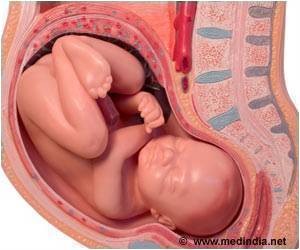
But prior research looking at metal impacts on fetal growth have typically looked at one metal at a time and within an individual population.
“So, our goal was to look across multiple diverse populations with different types of exposures, so we could get a better sense of the full dose response relationship for some of these chemicals in the context of the larger mixture,” she says.
To accomplish this, the researchers conducted an environmental mixture analysis of metal impacts on fetal growth, pooling data from three geographically and demographically diverse groups in the U.S. The groups, located in New Hampshire, Los Angeles, and Puerto Rico, participate in the Environmental Influences on Child Health Outcomes (ECHO) Program—a nationwide research program supported by the NIH that studies the effects of a broad range of early environmental influences on child health and development. Using a novel statistical approach that can account for complex mixtures of pollutants, the investigators examined associations between seven commonly found metals (antimony, cadmium, cobalt, mercury, molybdenum, nickel, and tin) measured in 1,002 maternal urine samples that were collected during pregnancy, and birthweight for gestational age. They also investigated potential differences between groups and the sex of the infants.
“Our most consistent finding was that antimony, an understudied metal, was associated with lower birthweight for gestational age across all three of the groups and in both males and females, suggesting that it may adversely impact fetal growth,” says Howe. “So, that’s an element where we would want to identify what the main sources of exposure are so that we can help reduce that exposure to prevent harmful effects on fetal growth in these different populations.”
For example, the higher antimony concentrations observed in the Los Angeles and Puerto Rico groups may be due to their urban locations, as traffic-related air pollution from brake wear and tear is known to be an important source of antimony exposure, as are smelting and coal-fired plants and waste incinerators. In contrast, bottled water may be a relevant source of antimony exposure for all three groups.
READ RELATED: Here's How to Order Your Free At-Home COVID Tests
While the researchers did identify some group- and/or sex-dependent associations for many of the other metals studied, says Howe, they lacked the consistency that was seen for the antimony results and therefore merit further investigation.
“Our hope is that we can do a larger study in the future that includes more cohorts, so that we can look further into what’s driving those inconsistencies and better understand the potential differences due to geography or other population characteristics,” says Howe.
The research was funded by the NIH, the National Institute of Environmental Health Sciences, and the Environmental Protection Agency.
Source: Eurekalert
Source:








